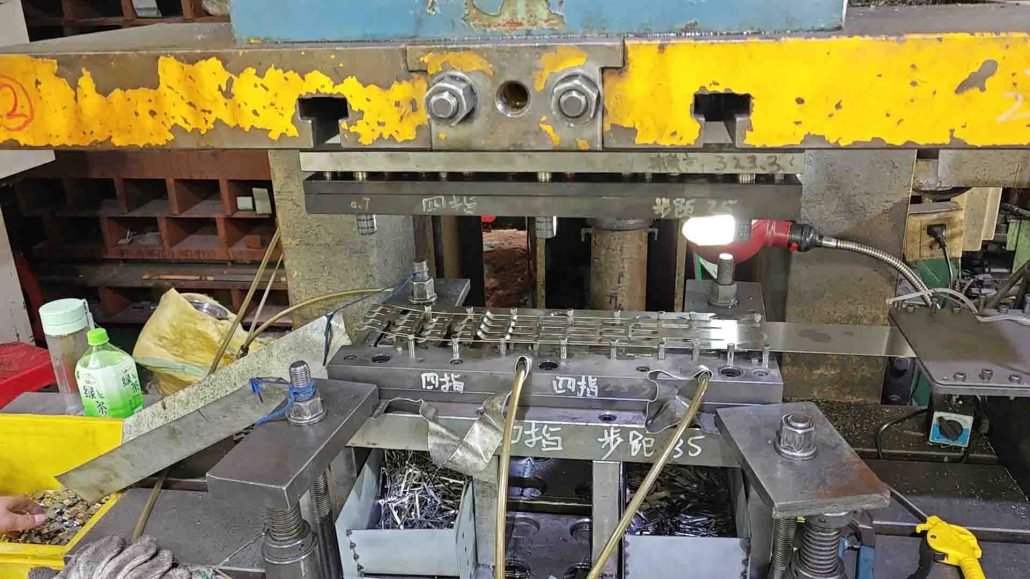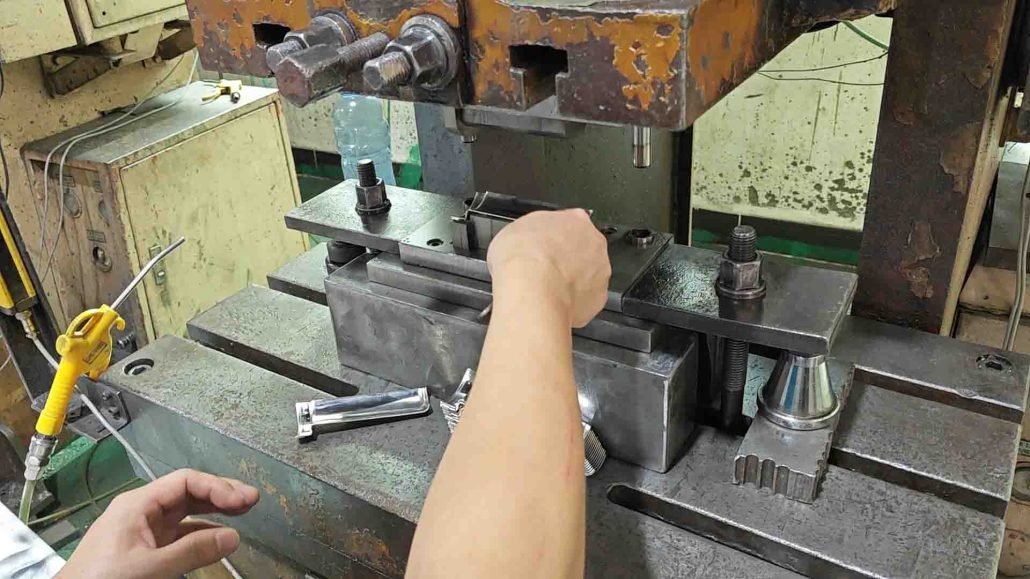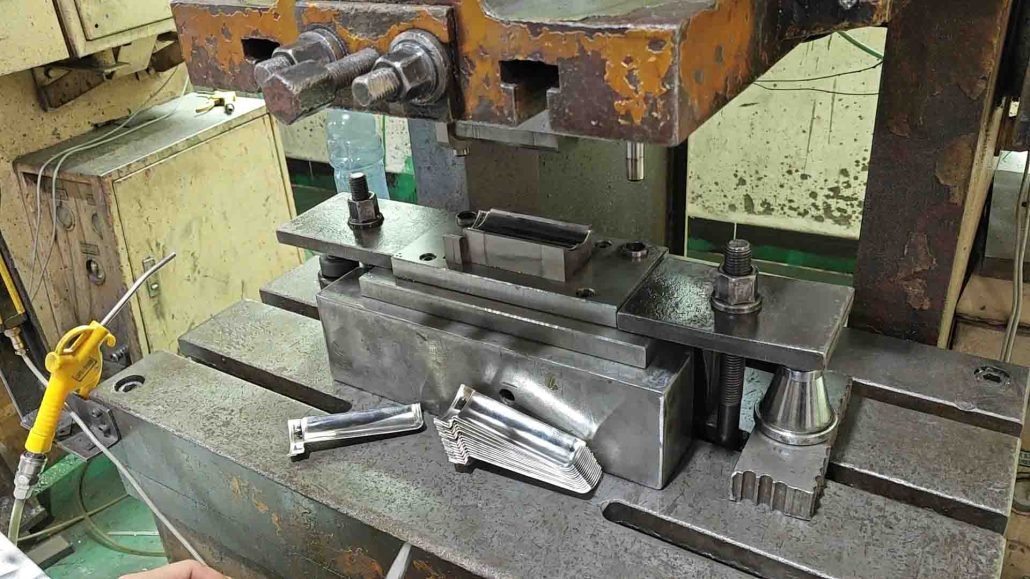The aerospace industry has seen significant advancements in recent years, with numerous technological breakthroughs in aircraft design and engineering emerging on a regular basis. Stamping forming metal is one such innovation, which has garnered substantial attention in the field of aerospace engineering. In this article, we will delve into the world of stamping forming metal in aerospace, discussing its benefits, applications, and advantages over traditional metalworking methods.
What is Stamping Forming Metal?
Stamping forming metal is a production process used to fabricate aircraft components from metals. In this method, a large piece of raw metal is placed in a mold or stamping press before being subjected to pressure or force to transform the metal’s shape. The process can be manual or automated, depending on the complexity and size of the part required.

The stamping process typically involves several steps, including blanking, bending, and punching. Blanking involves cutting the metal sheet into a desired shape, while bending involves forming the sheet into the desired angle or curve. Punching involves creating holes or other shapes in the metal sheet.
Stamping forming metal is a cost-effective and efficient manufacturing process, as it allows for the mass production of complex parts with minimal waste. It is commonly used in industries such as automotive, aerospace, and electronics.
In order to ensure the quality of stamped metal products, it is important to use high-quality materials and maintain the proper settings on the press machine. Additionally, regular maintenance and inspection of the dies is necessary to prevent defects and ensure consistent production.
Overall, stamping forming metal is a versatile and important manufacturing process that plays a critical role in the production of many products we use in our daily lives.
The Benefits of Stamping Forming Metal
The advantages of using stamping forming metal for aerospace components are numerous. For starters, the process ensures uniformity, so that parts fabricated by stamping will be identical with an extremely high degree of accuracy. Secondly, it is extremely cost-effective as it eliminates the need for welding or assembly required in traditional methods. The process also helps to reduce the waste produced during the manufacturing process as it produces parts that have been cut to the required size with minimal scrap material. Finally, this method provides a high degree of quality control to ensure that the components produced are high-quality and durable.
Stamping forming metal is a cost-effective and efficient way to produce metal parts for a variety of industries. Here are some of the benefits of using stamping forming metal:
High Precision
Stamping forming metal allows for high precision in the production of metal parts. The process uses a die and punch to shape the metal into the desired form. This ensures that each part is identical, with no variation in size or shape. High precision stamping forming metal is important in industries where accuracy is a top priority, such as aerospace and medical device manufacturing.

Cost-Effective
Stamping forming metal is a cost-effective way to produce metal parts in large quantities. The process is highly automated, requiring minimal human intervention. This reduces labor costs and increases production efficiency, leading to lower costs for the end product. The cost-effectiveness of stamping forming metal makes it a popular choice in industries where cost is a major consideration, such as consumer electronics and automotive manufacturing.
Versatility
Stamping forming metal can be used to produce a wide range of metal parts, including complex shapes and designs. The process can be used with a variety of metals, including steel, aluminum, copper, and brass. This versatility makes the stamping forming metal process suitable for a variety of industries, including construction, telecommunications, and defense.
Durability
Metal parts produced using stamping forming metal are highly durable and can withstand harsh environments. They are resistant to corrosion, wear, and tear, making them suitable for use in a variety of applications. The durability of stamping forming metal parts makes them ideal for use in industries where reliability is essential, such as oil and gas exploration and heavy equipment manufacturing.
Efficiency
Stamping forming metal is a highly efficient process that can produce large quantities of metal parts in a short amount of time. This makes it ideal for use in industries that require high-volume production, such as the automotive and electronics industries. The efficiency of stamping forming metal is also beneficial in industries where time-to-market is critical, such as the medical device and consumer electronics industries.
In conclusion, stamping forming metal is a versatile, cost-effective, durable, and efficient way to produce high-quality metal parts. Its benefits make it an attractive option for a wide range of industries, including aerospace, automotive, construction, defense, electronics, heavy equipment, medical device, oil and gas exploration, telecommunications, and more.

Applications of Stamping Forming Metal in Aerospace
Stamping forming metal in aerospace engineering has a wide range of applications. The most common are in the manufacture of aircraft wings, fuselage sections, and engine nacelles. These components are crucial in ensuring that the aircraft operates efficiently, safely, and reliably. Stamping forming metal is also utilized in the creation of turbine blades, heat exchangers, and structural components in aircraft.
The Advantages of Stamping Forming Metal over Traditional Metalworking Methods
The benefits of stamping forming metal in aerospace over traditional metalworking methods are quite evident. Unlike traditional methods, stamping forming metal eliminates the need for secondary welding or assembly, reducing production time and costs. Since the process produces parts that are identical with high precision, there is a much higher degree of quality control over the components produced. Stamping forming metal also offers design flexibility, and parts can be fabricated in complex shapes, sizes, and forms.
Conclusion: Stamping Forming Metal is the Future of Aerospace Engineering
The aerospace industry is continually seeking innovative and efficient methods to produce high-quality components for aircraft. Stamping forming metal has proven to be a cost-effective, efficient, and reliable method for fabricating components in the aerospace industry. Its ability to produce accurate and uniform parts has made it a popular choice amongst aerospace manufacturers, and its applications continue to grow. As such, it is evident that stamping forming metal is the future of aerospace engineering, and its importance will continue to grow in the years to come.


